MAKER: Zulauf & Zschokke
c. 1900
SIGNED:Zulauf & Zschokke, Zurich
SERIAL NUMBER: 1752
AUTHOR: Barry Sobel, with information about the history of the company by Brian Stevenson
EDITOR: Joseph Zeligs
Please Click On Any Picture for a Larger Version, Where Available
DESCRIPTION:
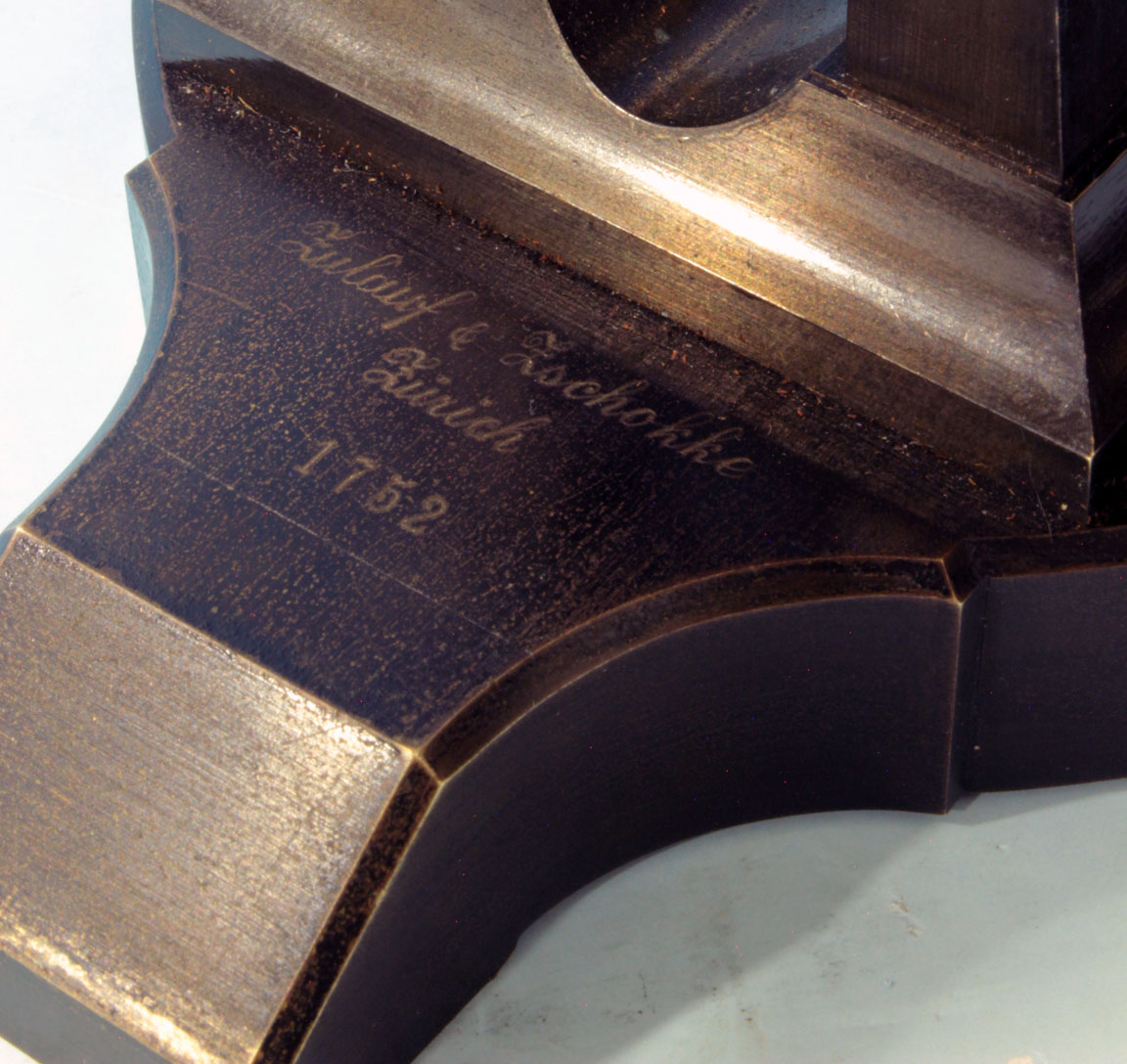
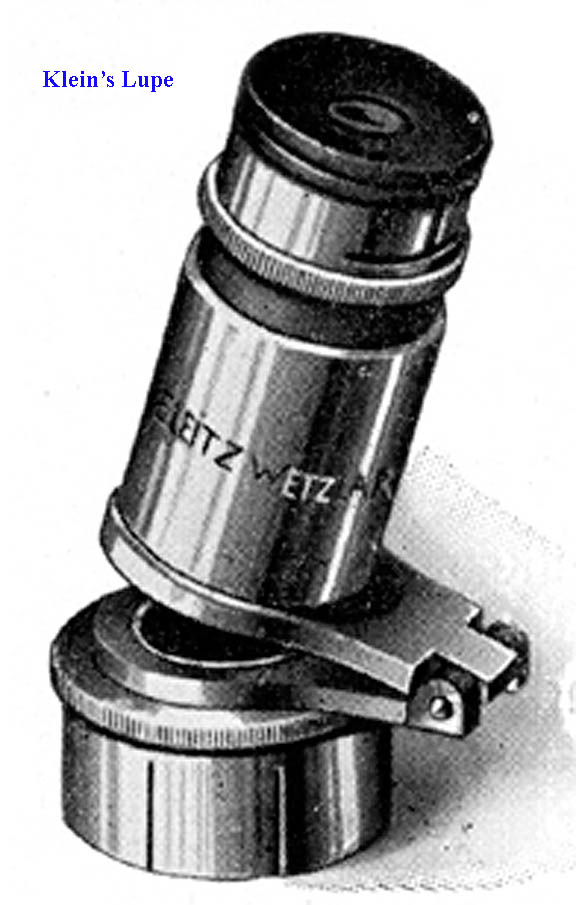
This is a large fine continental limb polarization microscope signed on the foot:
Zulauf & Zschokke, Zurich, 1752
It is built upon a Y-shaped continental foot with twin pillar uprights leading to the inclination joint, the tension of which can be adjusted by a nickel-plated lever on the right side. It is about 14.5 inches high in slightly inclined working position. The microscope could easily be used as a petrographic microscope with the addition of a crosshair eyepiece, a Klein's lupe (right)
, and waveplates. These are lacking in this instrument and may not have been present at the time of its original sale.
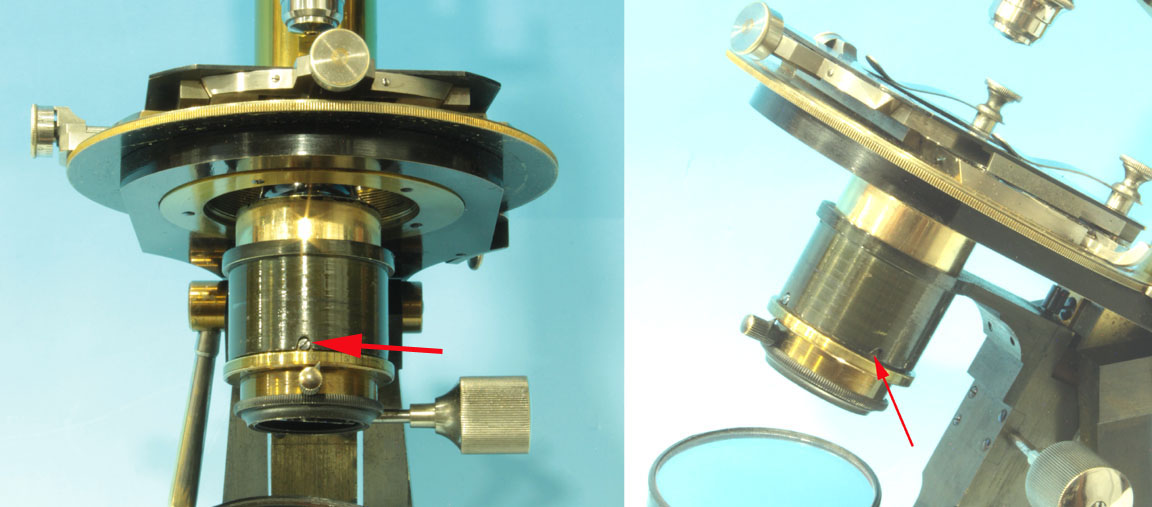
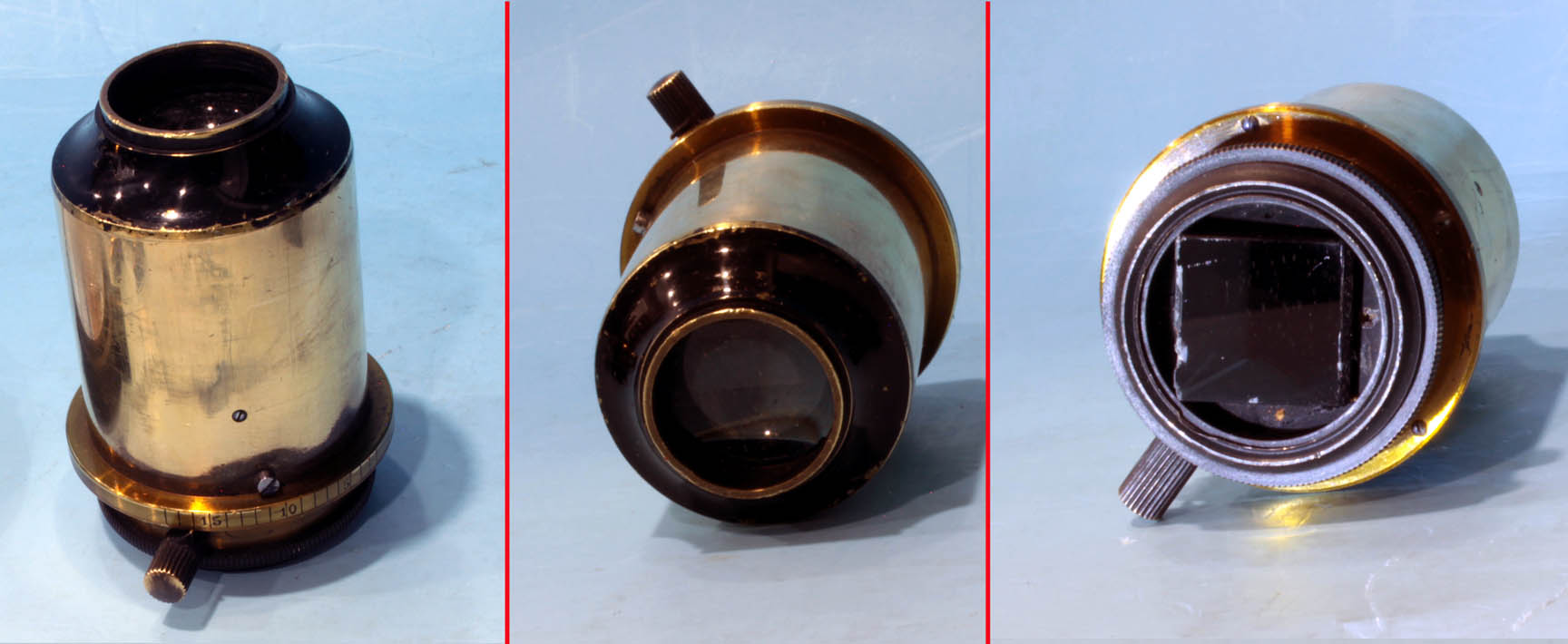
The substage rides on a trapezoidal tailpiece, focusing by rack and pinion via knurled nickel-plated knob on the left side. The substage ring carries a condenser with a Glan-Thompson polarizing prism and has a calibrated adjustment to the iris diaphragm controlled by a small knurled brass knob. It is calibrated in intervals from 2 to 16, labeled at 5, 10, and 15. The scale is silvered. The condenser has a small screw that is used to register the condenser in any of the three small cutouts on the substage ring one on front and one on each side, one of which is indicated by the red arrow. There is a large lens at the top end of the condenser. The condenser can be used for high power work when the separate upper condenser lens, which is part of the mechanical stage, is brought into the optical axis (see below).
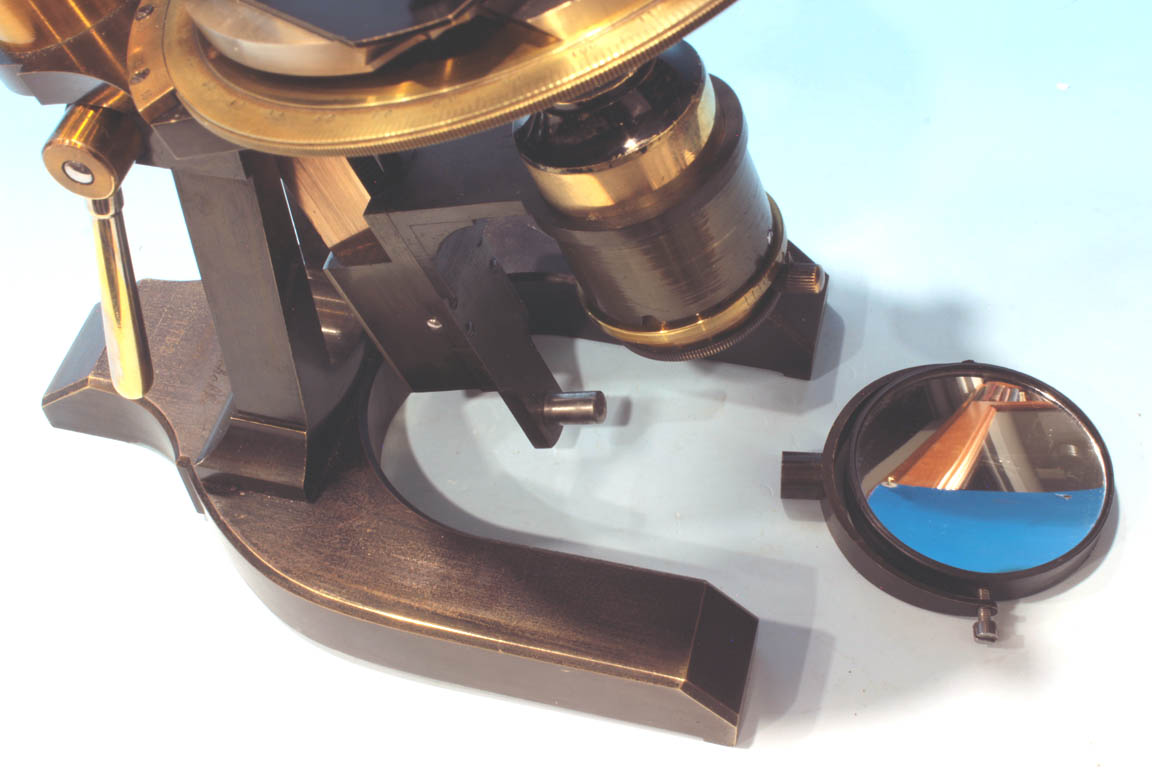
At the bottom of the tailpiece is the gimbaled mirror. The gimbal can be rotated, but the pin that it slides onto is fixed so the distance from the condenser is fixed. The mirror is flat on one side of concave on the other. It can be pulled off of the peg if needed.
As shown in the illustration at the top of the page, and in more detail on its own dedicated web page, the stage is the Fuess Type mechanical stage. It can be rotated in the stage ring that supports it and there is a clutch located on the left side of the stage near the limb which can be used to lock the stage at any degree of rotation. The edge of the rotating stage is calibrated in one degree increments, 0 to 360 degrees labeled every ten. There are Vernier scales on both the right and left of the rear of the stage, calibrated from in one minute intervals from 0 to 60, labeled every ten. A lever on the left side of the stage controls the condenser top lens to take it in or out of the optical axis. This lens slips into or out of its ring and can be easily replaced. There are two nickel-plated stage clips that can be removed. The movement of the top of the stage is controlled by nickel-plated knurled knobs, which provide movement in either the X axis or Y axis. These movements are calibrated by scales on the left side of the stage, and in addition, the rotation of the right sided knob is also calibrated around its circumference. The stage is made of metal alloy, probably German silver, and assembled with very tiny blackened screws. The rotation scales are silvered. The X and Y scales are silver-colored metal alloy.
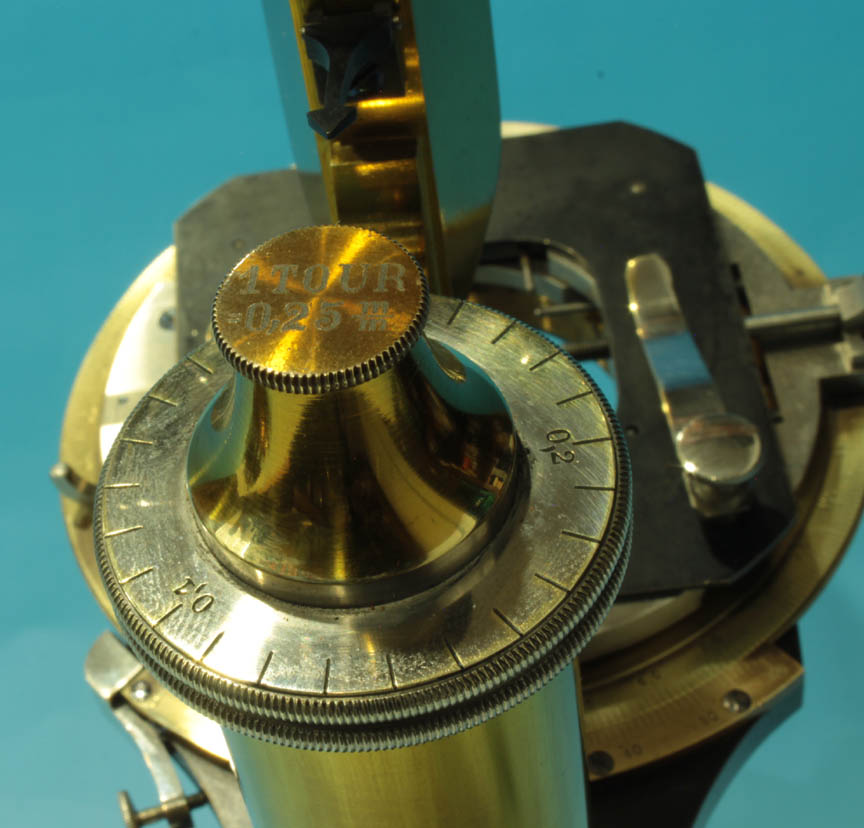
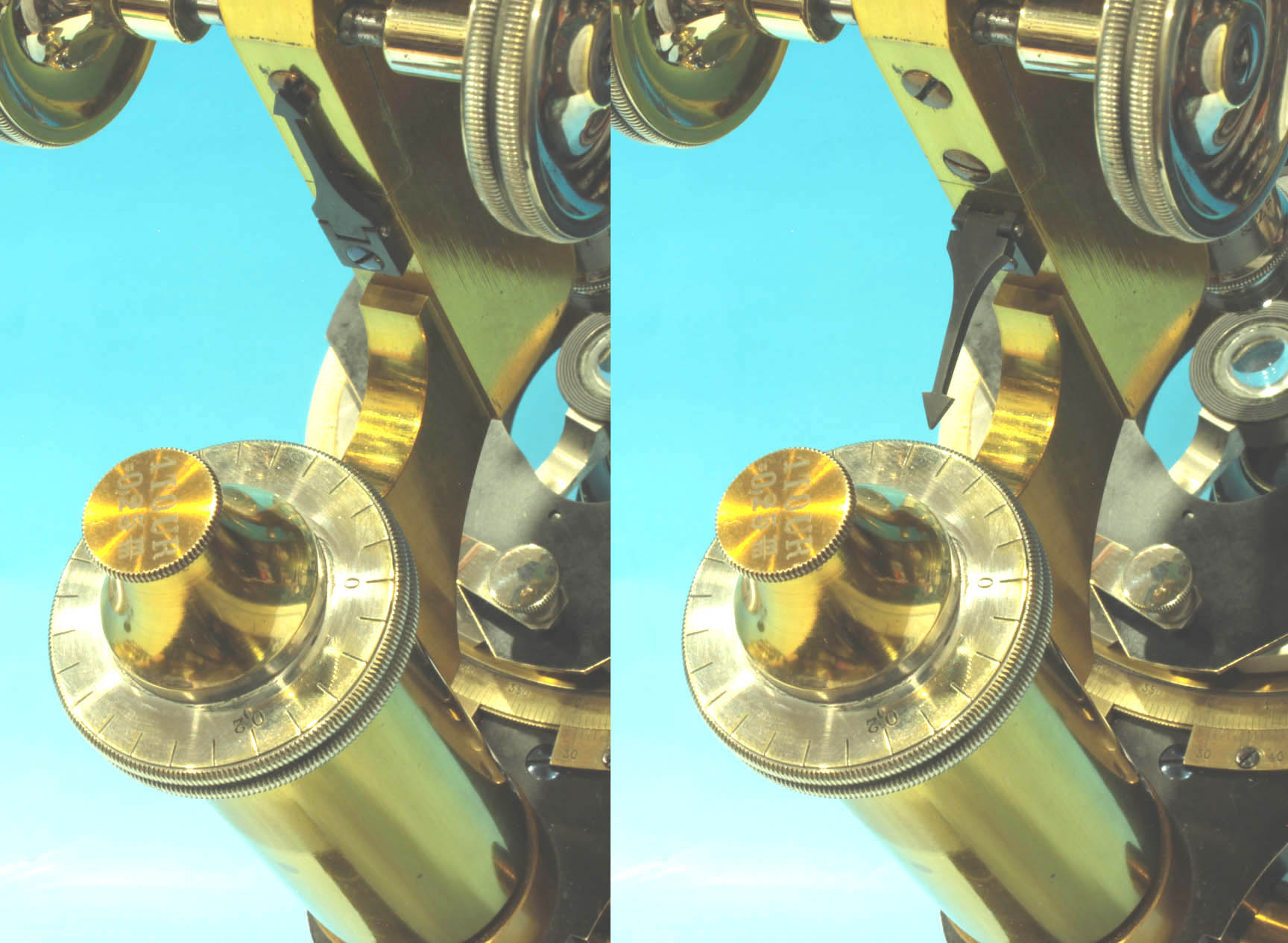
The coarse focus is by diagonal rack and pinion controlled by nickel-plated knurled knobs. The fine focus knob at the top of the limb is calibrated 0 to 0.25 in 0.01 mm increments, labeled at 0, 0.1 and 0.2; the top of the knob is engraved: 1 TOUR=0.25 mm
.
There is knurling on the (wider) nickel-plated calibrated part of the knob, and also on its smaller diameter top allowing faster rotation from the smaller part, thus providing a two speed
fine adjustment. A blackened metal arrowhead is hinged to the back of the limb and can be flipped down to be used as a registration point for the fine focus knob calibration.
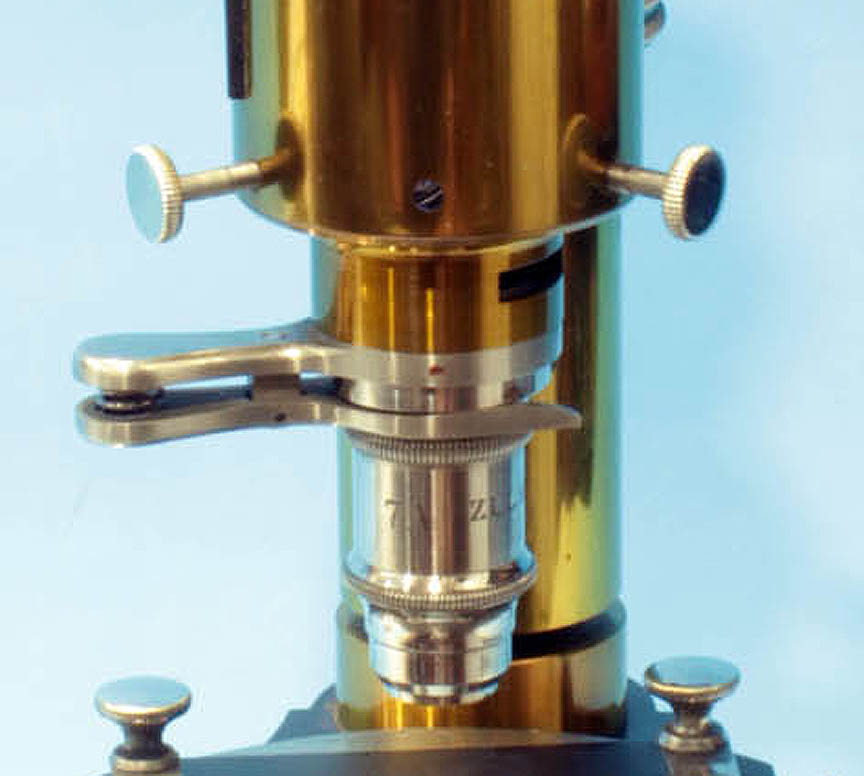
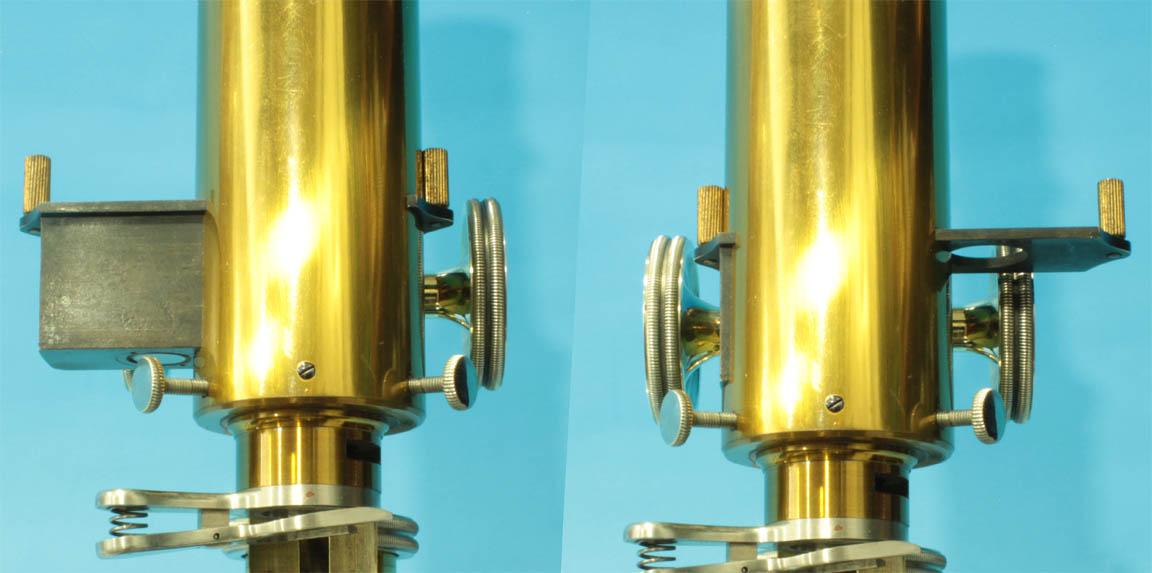
The nosepiece of the tube is a spring-loaded quick change type which accepts the adapters on the objectives (see below). The nosepiece centering is adjustable via the two small brass nickel-plated knobs. A Glan-Thompson prism analyzer is built into the tube and can be slid into or out of the optical axis. There is a slot in the nosepiece to accommodate waveplates, though none are present at this time.
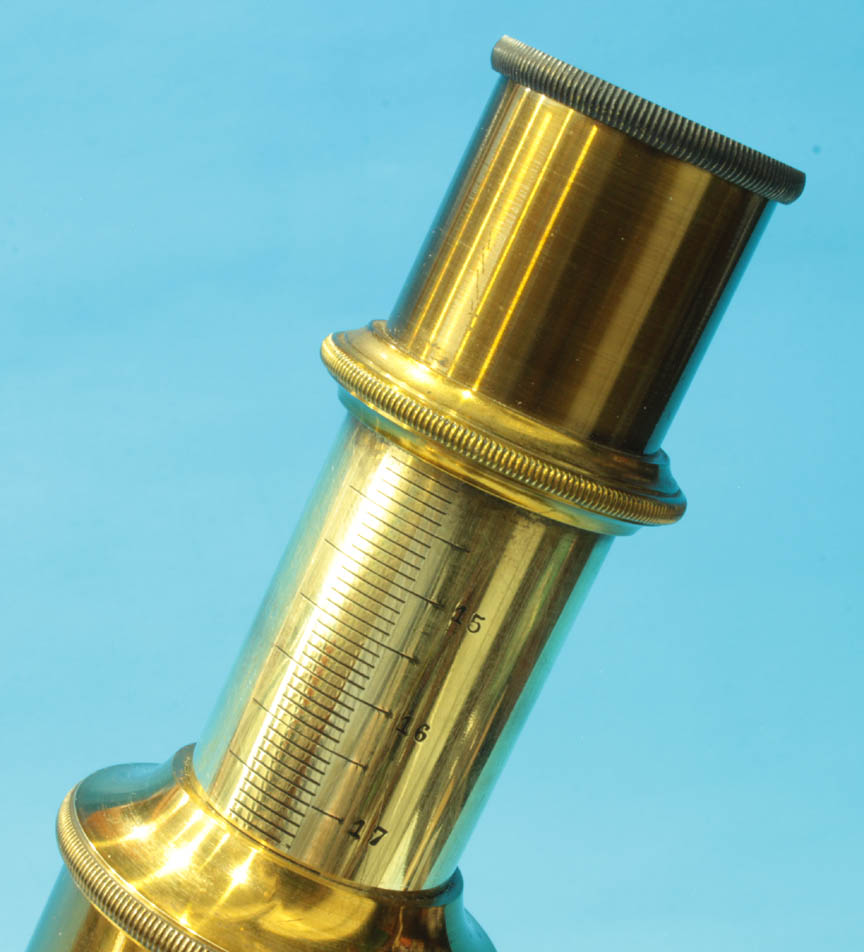
There is a nickel-plated draw tube calibrated from 14 to 17 cm in 1 mm intervals labeled at 15, 16, and 17 cm.
ACCESSORIES:
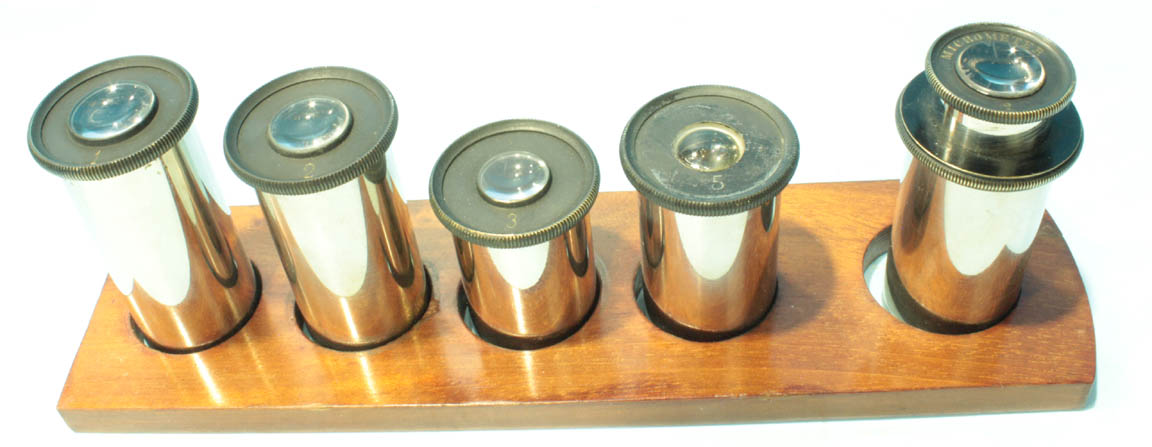
Accessories include, in addition to the stage clips and polarizing condenser, four objectives, 5 eyepieces and a magnification card affixed to the inside of the cabinet door. The Huygens eyepieces are numbered 1,2,3 and 5 and in addition, there is a micrometer eyepiece, though the magnification card only lists numbers 1,2,and 3. The micrometer eyepiece has a focusing top allowing the user to adjust the focus of the scale so it is in focus along when the microscope is focused on the subject.
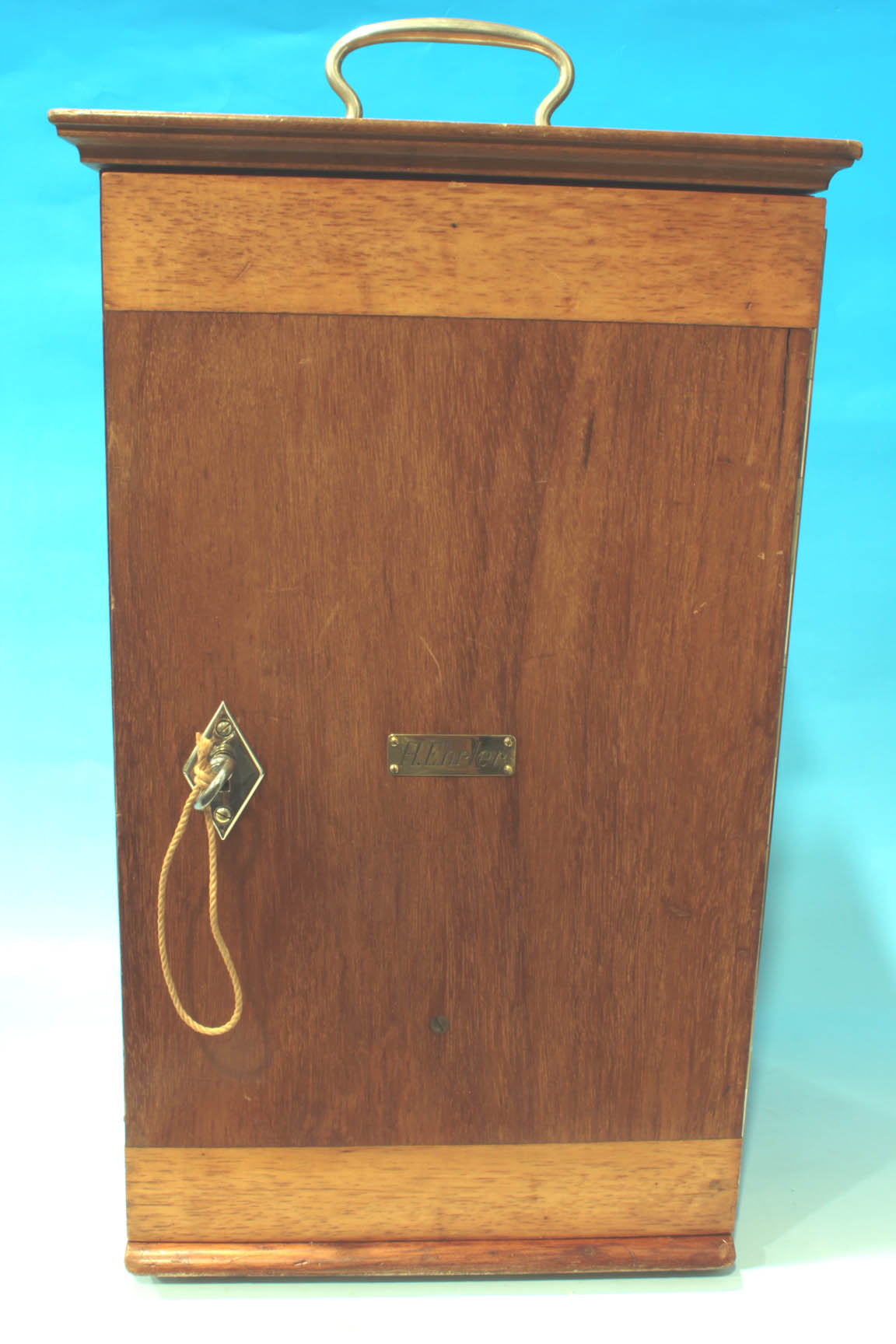
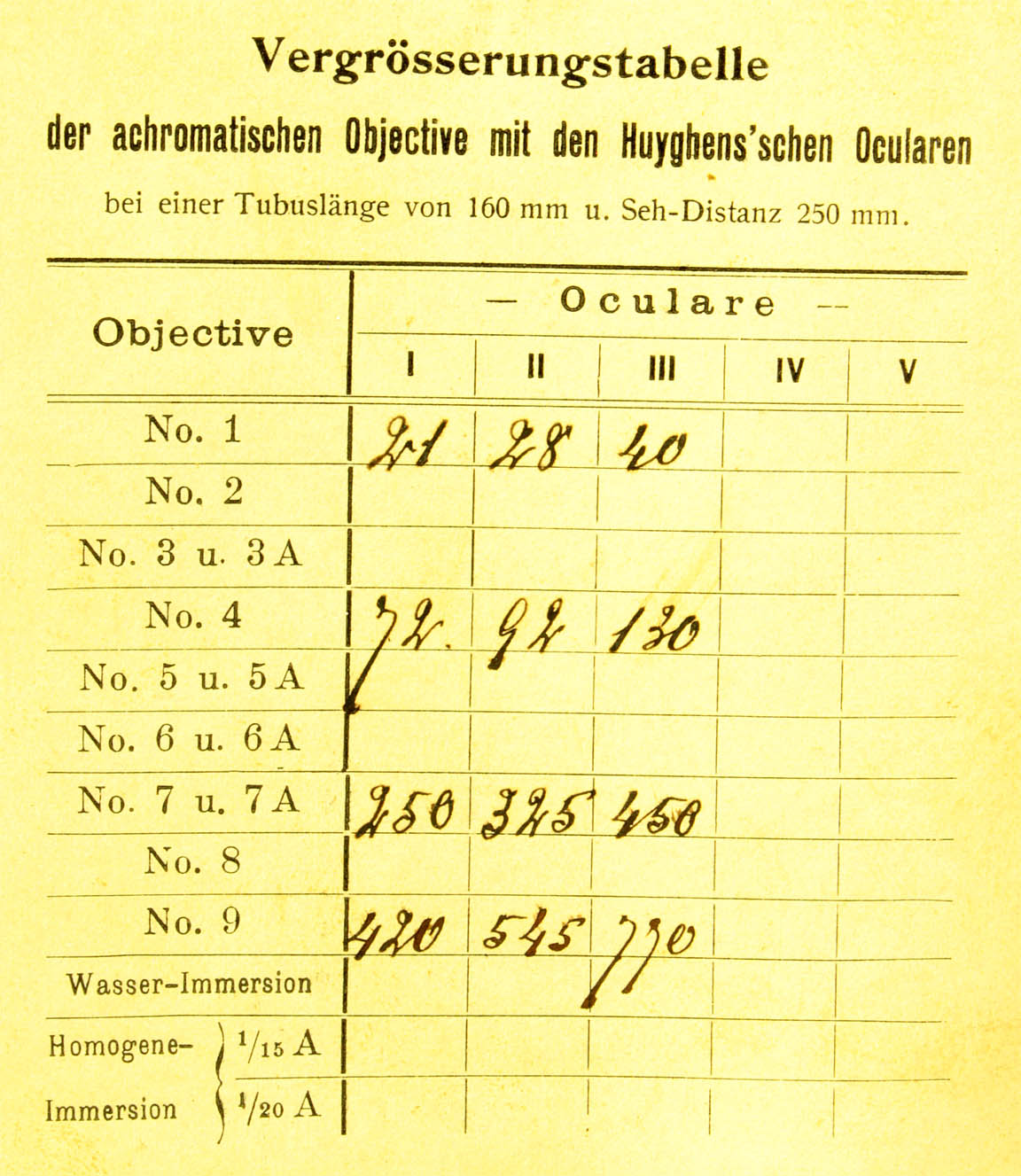 The original hardwood case has a working lock and key. The magnification card on the inside of the door shows that the objectives are meant to be used with a 160 mm tube length, and that they are achromatic. It also states that the viewing distance is 250 mm. The magnification card has lines for water immersion and oil immersion objectives, but these lines are blank, suggesting these were not supplied with the microscope at the time of purchase. The front of the case has an engraved nameplate for
The original hardwood case has a working lock and key. The magnification card on the inside of the door shows that the objectives are meant to be used with a 160 mm tube length, and that they are achromatic. It also states that the viewing distance is 250 mm. The magnification card has lines for water immersion and oil immersion objectives, but these lines are blank, suggesting these were not supplied with the microscope at the time of purchase. The front of the case has an engraved nameplate for H. Ehrler
, presumably the original owner.
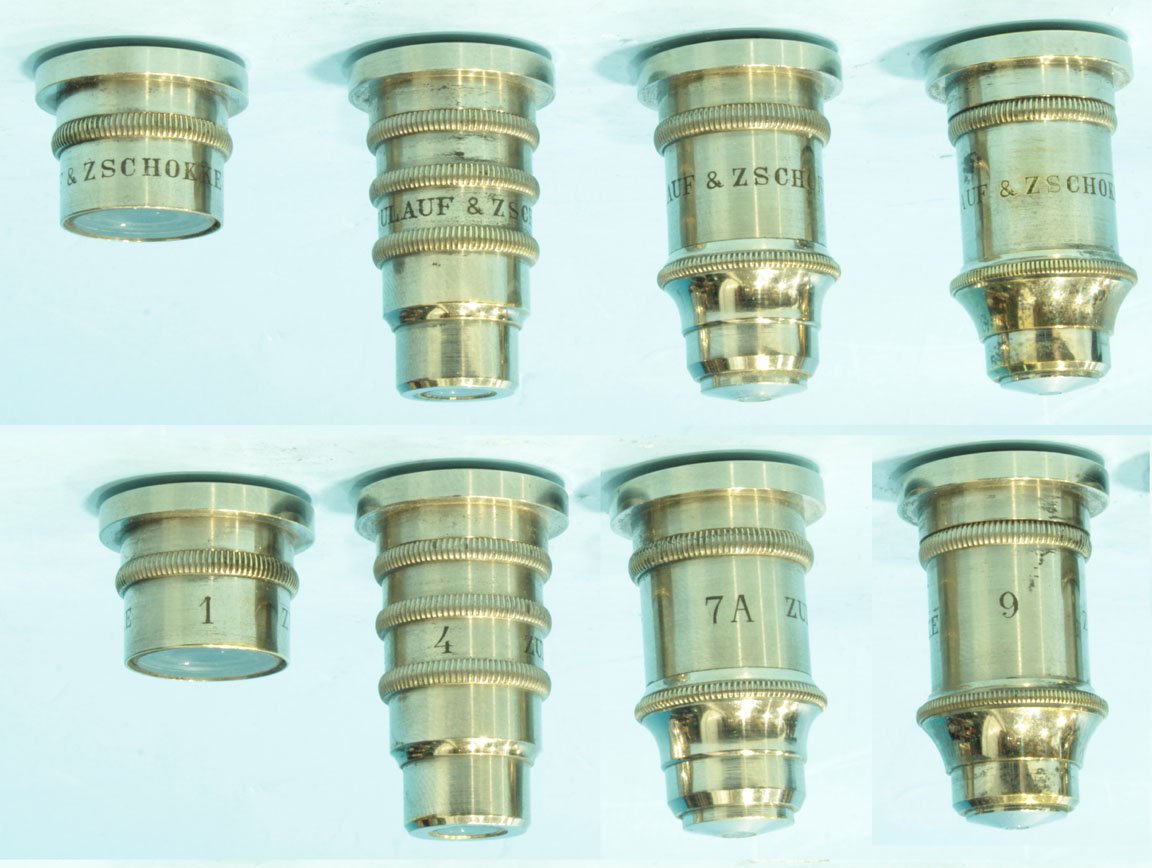
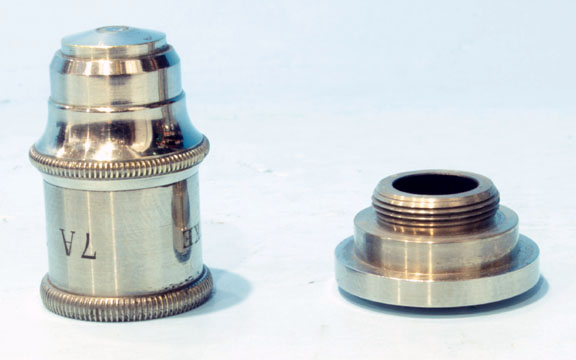
The beautiful nickel-plated objectives are numbers 1, 4, 7A, and 9. These are the only objectives listed on the magnification card, implying that they are the original ones supplied with the microscope. They are stored upright in a leather-covered case with soft purple cushioning inside. All objectives have female threads, and each has an adapter screwed into it which fits the quick change centerable nosepiece, allowing par-centration of each objective once the nosepiece is centered.
CONDITION:
The microscope is overall in excellent condition. The finishes are excellent throughout with minimal if any losses. The micrometer eyepiece is delaminated and the number 5 eyepiece is not functional. All the other eyepieces are good. The original mirrors on their housing were destroyed in shipping and the mirror housing is a realistic-looking replacement that is nearly identical in dimensions and color. The case was also damaged in shipping but only at the seams and has been carefully re-glued. The polarizer and analyzer are good. The iris works well. All mechanical functions are intact and work well. The nosepiece centering works well but the springs are weakened a bit, and so the nosepiece needs to be nudged into position when the knobs are adjusted. The case for the objectives is in fine condition with working catch and secures the objectives well.
HISTORY:
The following information was kindly provided by Brian Stevenson.
Gottleib Zulauf had worked for A. Meyer & Co in Zurich and took over their business. It is known that the Meyer company sold microscopes. Zulauf started Zulauf & Co in 1895. At a point between 1897 and 1900, this became G. Zulauf & Zschokke. Zschokke was known to be a mathematician and optical engineer, and had worked for Steinheil. Steinheil made lenses for Zulauf. By 1900 he expanded the business to include cameras. In 1901, it returned to G. Zulauf & Co. In 1901 Zulauf was advertising not only microscopes but also microtomes and microphotographic
apparatus. Zulauf sold the business to Zeiss/ICA in 1912. The Petrographic microscope featured on this page above was evidently manufactured between 1897 and 1901. In 1902 he was advertising not only his microscopes but also microphotography equipment. It is apparent that he was involved in the camera/photographic business when he sold out to Zeiss and continued his work with the ICA (International Camera Actiengesellschaft in Dresden Germany. In 1922 Zulauf moved back to Zurich Switzerland where he took over a photography dealership. He sold his dealership in 1933 and retired. For further information about this firm, please see the detailed pages by Brian Stevenson at microscopist.net.
In the 1898 Swiss book by Eternod, GUIDE TECHNIQUE DU LABORATOIRE D'HISTOLOGIE NORMALE ET ELEMENTS D'ANATOMIE ET DE PHYSIOLOGIE GENERALES, several examples of the products of Zulauf & Co were illustrated including their small microscope, complete microscope, and their mineralogical stand of that time:
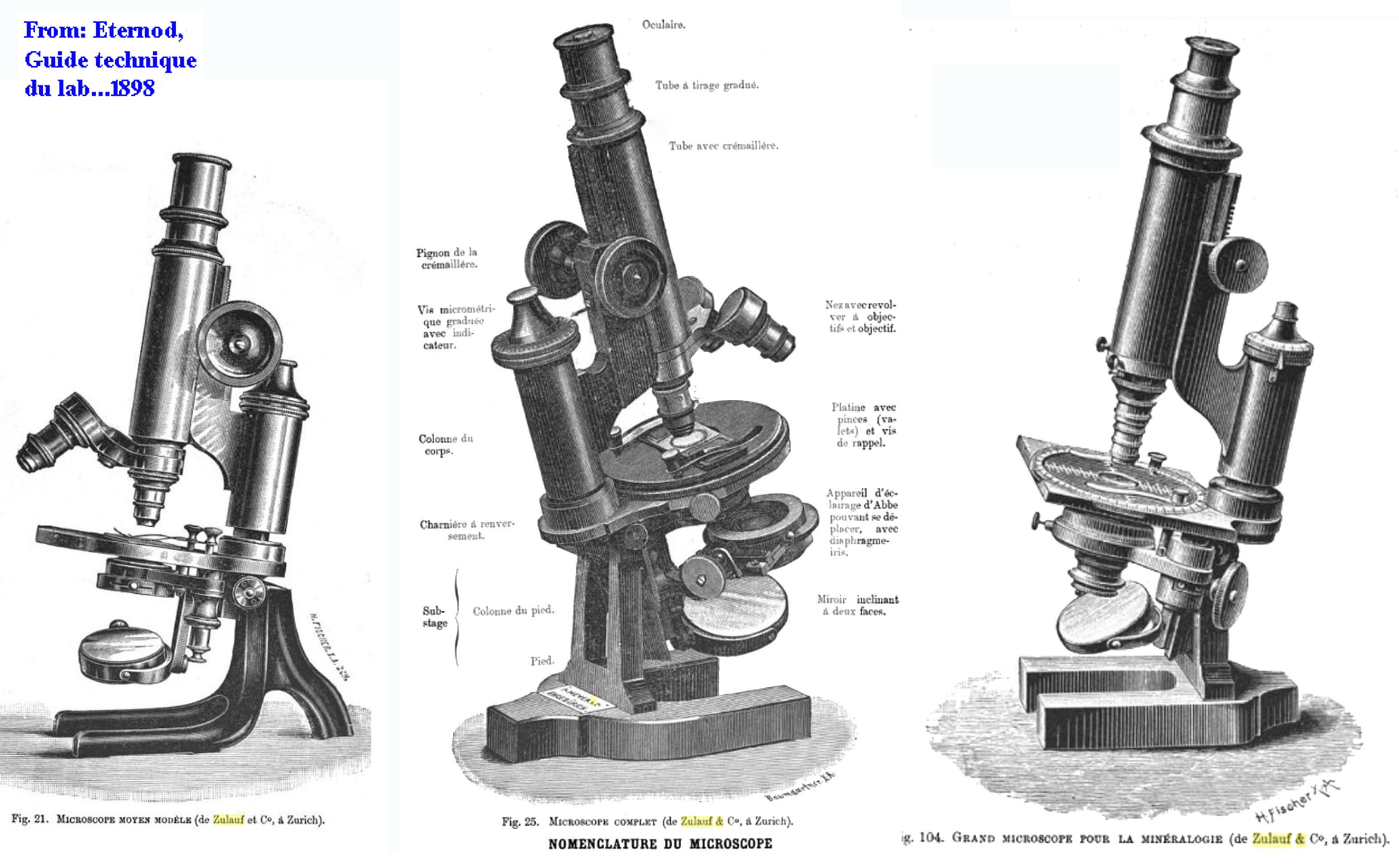


The company advertised microscopes frequently in German language periodicals, especially between 1896 and 1907. The ad on the left from 1900 shows a microscope similar to the one featured above on this web page, though without the petrographic fittings; it appears to be the same as serial number 1886 below. Microscopes by this company are not commonly encountered. There have been about six sold at auctions over the last few years and we have found a few more on the internet. As of March 2025, we know of no other extant petrographic microscope by the company. Of the known examples by this maker, serial numbers reported have included 1666, 1752, 1761, 1840, 1880, 1886, 2018, and 2038. For more information about this firm, please see Brian Stevenson's site, Microscopist.net
Some surviving Zulauf microscopes are shown below:
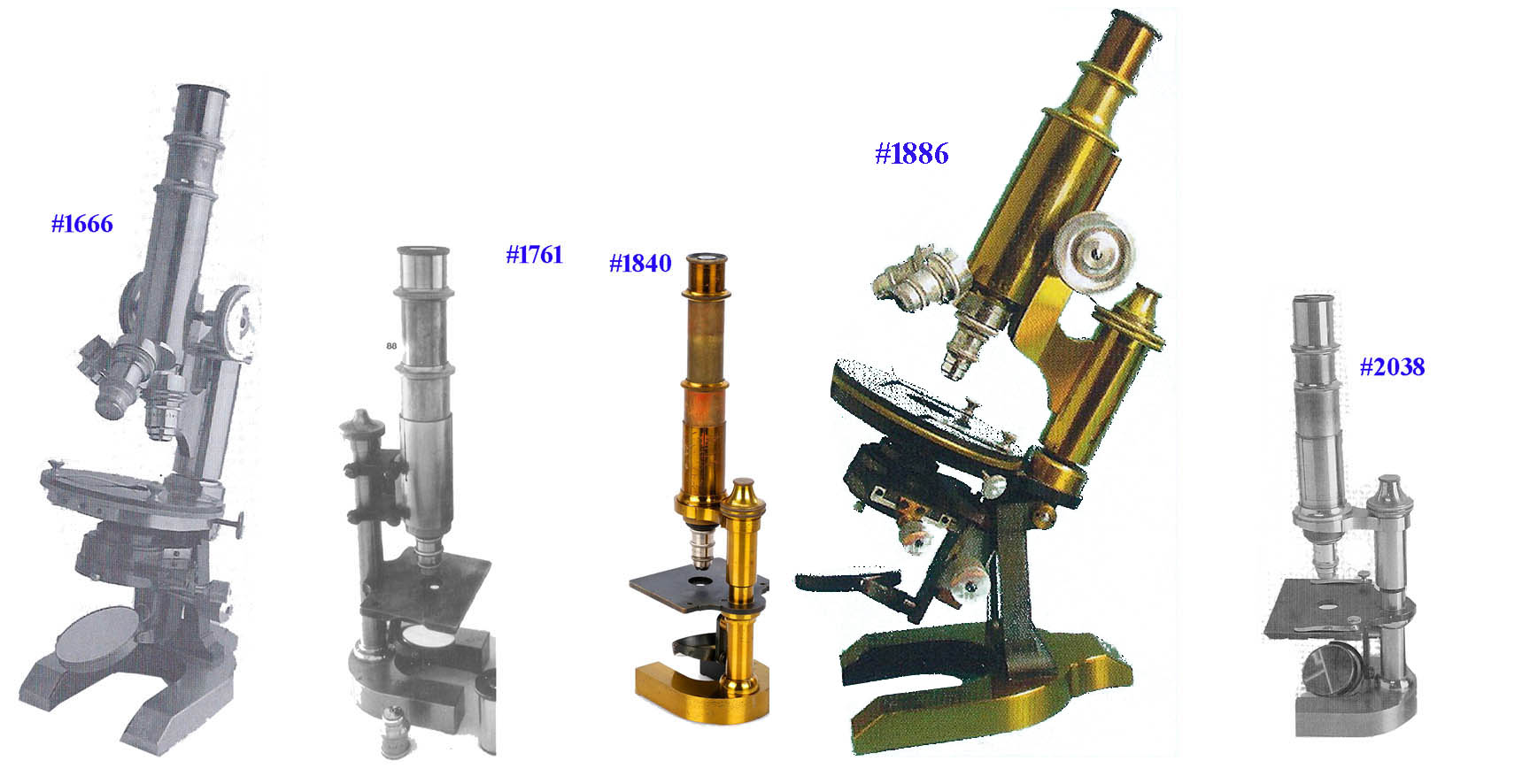












 The original hardwood case has a working lock and key. The magnification card on the inside of the door shows that the objectives are meant to be used with a 160 mm tube length, and that they are achromatic. It also states that the viewing distance is 250 mm. The magnification card has lines for water immersion and oil immersion objectives, but these lines are blank, suggesting these were not supplied with the microscope at the time of purchase. The front of the case has an engraved nameplate for
The original hardwood case has a working lock and key. The magnification card on the inside of the door shows that the objectives are meant to be used with a 160 mm tube length, and that they are achromatic. It also states that the viewing distance is 250 mm. The magnification card has lines for water immersion and oil immersion objectives, but these lines are blank, suggesting these were not supplied with the microscope at the time of purchase. The front of the case has an engraved nameplate for 




